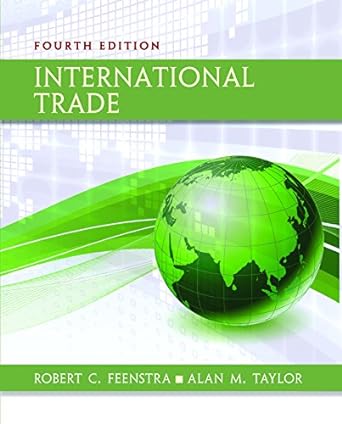Leontiefs paradox is an example of testing a trade model using actual data observations. If Leontief had
Question:
Leontief’s paradox is an example of testing a trade model using actual data observations. If Leontief had observed that the amount of labor needed per $1 million of U.S. exports was 100 person-years instead of 182, would he have reached the same conclusion? Explain.
Suppose there are drastic technological improvements in shoe production in Home such that shoe factories can operate almost completely with computer-aided machines. Consider the following data for the Home country:
Computers: Sales revenue = PCQC = 100 Payments to labor = WLC = 50 Payments to capital = RKC = 50 Percentage increase in the price = ΔPC/PC = 0%
Shoes: Sales revenue = PSQS = 100 Payments to labor = WLS = 10 Payments to capital = RKS = 90 Percentage increase in the price = ΔPS/PS = 40%
a. Which industry is capital-intensive? Is this a reasonable question, given that some industries are capital-intensive in some countries and labor-intensive in others?
b. Given the percentage changes in output prices in the data provided, calculate the percentage change in the rental on capital.
c. How does the magnitude of this change compare with that of labor?
d. Which factor gains in real terms, and which factor loses? Are these results consistent with the Stolper–
Samuelson theorem? LO.1
Step by Step Answer:






